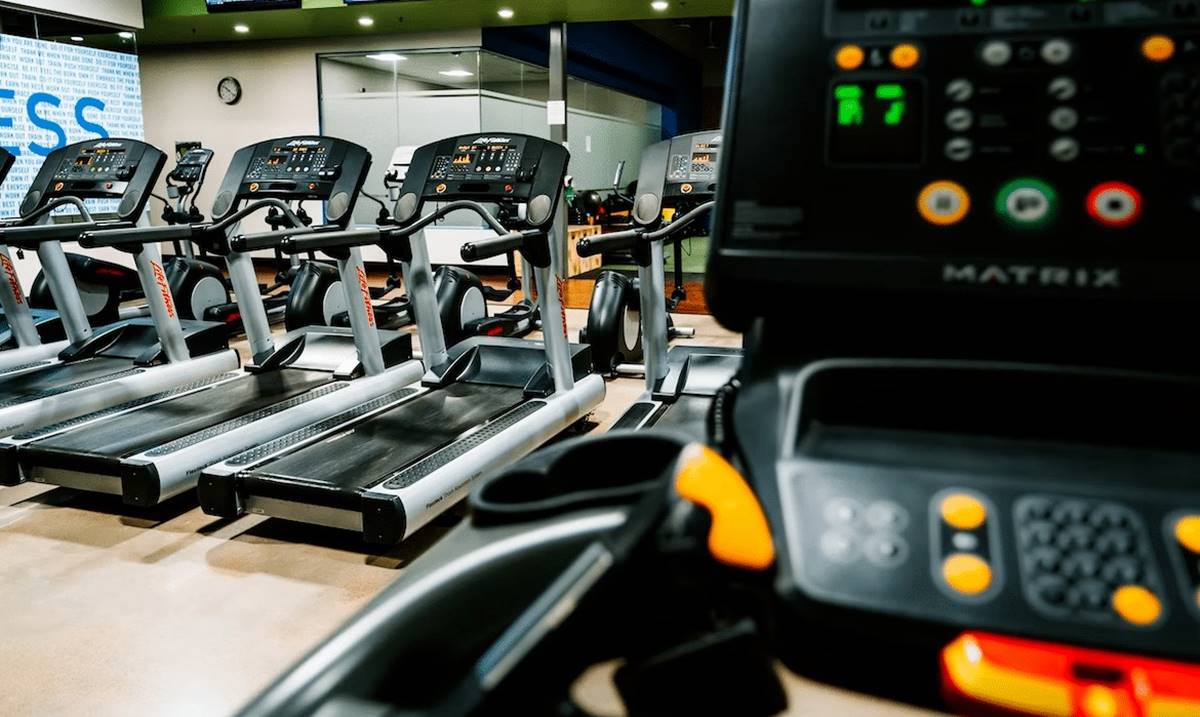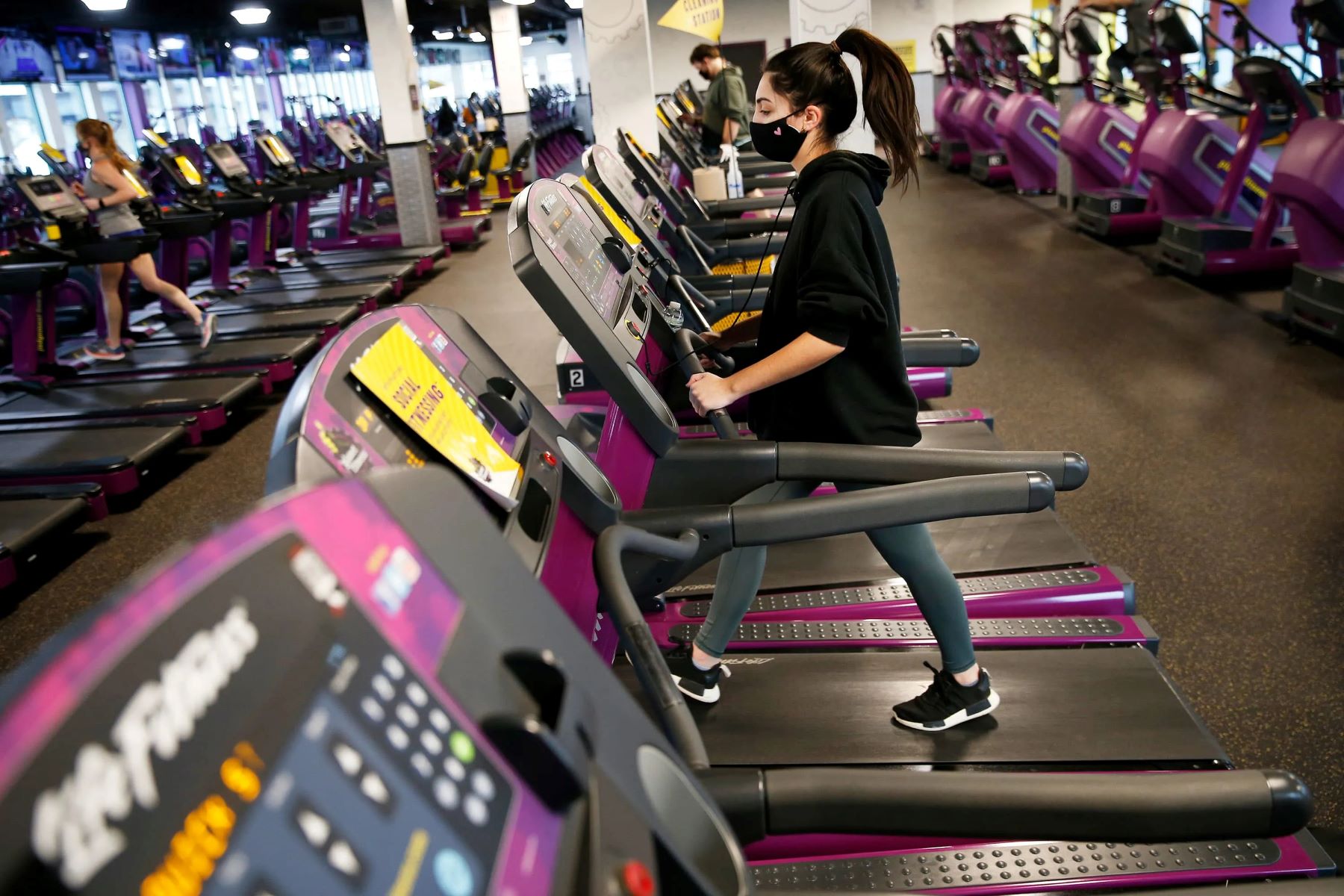

Featured
How To Breathe While Jogging
Modified: August 18, 2023
Learn how to optimize your breathing technique while jogging with our featured guide and improve your overall running performance.
Introduction
When it comes to jogging, many people focus on their speed, distance, and technique, but often overlook the importance of proper breathing. Whether you’re a seasoned runner or just starting out, understanding how to breathe correctly while jogging can significantly improve your performance and overall experience.
Proper breathing techniques can help optimize oxygen intake, reduce fatigue, and improve endurance. By learning how to control your breath, you can increase your running efficiency and avoid common issues like side stitches or shortness of breath.
In this article, we will explore various breathing techniques that can be beneficial while jogging. From belly breathing to nasal breathing and diaphragmatic breathing, we will discuss the benefits of each technique and how to implement them into your running routine. Additionally, we will address the importance of maintaining a proper breathing cadence and pace to enhance your jogging experience.
By incorporating these techniques into your runs, you can maximize your performance, increase your stamina, and enjoy a more enjoyable and efficient jogging experience. So, let’s dive into the world of proper breathing for jogging and discover how you can optimize your breath to become a better runner.
Why Proper Breathing is Important
Proper breathing is crucial for runners because it helps supply the body with the oxygen it needs to perform at its best. When we jog, our muscles require oxygen to produce energy and keep us moving. Efficient breathing ensures that our muscles receive a constant flow of oxygen, helping us sustain our effort and prevent the onset of fatigue.
One of the main reasons why proper breathing is essential is because it helps maintain a balanced oxygen-to-carbon dioxide ratio in our bodies. When we breathe improperly, shallow or rapid breaths can lead to an imbalance in this ratio, resulting in increased carbon dioxide levels and reduced oxygen uptake.
In addition to maintaining the oxygen balance, proper breathing also helps to prevent side stitches. These painful cramps that often occur in the side of the abdomen are often caused by the repetitive motion of the diaphragm and the tension it places on the surrounding connective tissues. By focusing on controlled and rhythmic breathing, you can reduce the strain on the diaphragm and minimize the chances of experiencing side stitches.
Furthermore, proper breathing techniques can help calm the mind and reduce stress levels while jogging. By focusing on the breath and practicing mindful breathing, you can enter a state of relaxation, which can improve your mental focus and concentration. This can be especially beneficial during long-distance runs or high-intensity workouts where mental stamina is as important as physical endurance.
In summary, proper breathing is important for several reasons. It helps maintain a balanced oxygen-to-carbon dioxide ratio, prevents side stitches, reduces stress levels, and enhances mental focus. By paying attention to your breath and practicing proper breathing techniques, you can optimize your running performance and enjoy a more enjoyable and efficient jogging experience.
Finding Your Rhythm
When it comes to jogging, finding your rhythm in terms of breathing is crucial. Each person’s breathing pattern may vary, so it’s important to discover what works best for you. Finding your rhythm involves finding the pace and pattern of breaths that allows you to run comfortably and efficiently.
Firstly, it’s important to find a breathing pattern that matches your running pace. Generally, the most common and effective breathing pattern for jogging is to inhale for two steps and exhale for two steps. This pattern, known as “two-two breathing,” synchronizes the breath with your stride, creating a smooth and consistent rhythm.
However, you may find that a different breathing pattern suits you better. Some runners prefer a three-two or a four-two breathing pattern, where the number of steps taken for inhalation is different from the number of steps for exhalation. Experiment with different patterns and pay attention to how your body responds. Find the pattern that allows you to breathe comfortably without feeling out of breath or strained.
In addition to the pattern, focus on the depth of your breaths. Deep and full breaths allow for optimal oxygen intake and help keep your body well-oxygenated throughout your run. Avoid shallow, chest-only breathing, as it limits the amount of oxygen you can take in and can lead to faster fatigue.
It’s also worth noting that finding your rhythm may take some time and practice. Pay attention to your breath during different paces and distances, and be patient with yourself as you explore what works best for you. Gradually increase your awareness of your breath and make adjustments as needed.
Remember, finding your rhythm is about finding what feels natural and comfortable for you. Listen to your body, pay attention to your breath, and trust your instincts. With time and practice, you will discover the breathing pattern that allows you to run with ease and efficiency.
Breathing Techniques for Jogging
When it comes to breathing techniques for jogging, there are several methods that runners can employ to optimize their breath and enhance their performance. Let’s explore three popular and effective techniques:
- Belly Breathing: Also known as “diaphragmatic breathing,” this technique involves focusing on deep breaths that fully engage the diaphragm muscle. To practice belly breathing, place one hand on your abdomen and take a slow, deep breath in through your nose, allowing your belly to expand. Exhale slowly through your mouth, feeling your abdomen naturally deflate. This technique helps maximize oxygen intake and promotes a relaxed state of mind.
- Nasal Breathing: Nasal breathing involves breathing in and out exclusively through your nose while jogging. It filters and warms the air before it enters your lungs, making it more comfortable to breathe, especially in colder or polluted environments. Nasal breathing can also assist in maintaining a steady rhythm and preventing hyperventilation. However, it may increase the perceived effort for some runners during high-intensity workouts.
- Diaphragmatic Breathing: This technique emphasizes breathing deeply into your diaphragm rather than shallow breathing into your chest. To practice diaphragmatic breathing, imagine filling your lungs from the bottom up, expanding your belly as you inhale. This technique helps increase oxygen intake and minimizes the risk of shallow breathing, which can result in insufficient oxygenation of the muscles.
Remember, the key is to choose a breathing technique that feels comfortable and natural for you. Experiment with each technique during your training runs and listen to your body to determine which one suits you best. The right technique may also vary depending on the intensity level of your workout, so being adaptable and aware of your breathing throughout your jog is crucial.
By incorporating these breathing techniques into your running routine, you can optimize your oxygen intake, reduce stress on your body, and enhance your overall running performance.
Belly Breathing
One effective breathing technique for jogging is belly breathing, also known as diaphragmatic breathing. This technique involves utilizing the diaphragm, a large muscle located below the lungs, to take deep and efficient breaths.
To practice belly breathing while jogging, start by finding a comfortable pace. Begin by inhaling slowly through your nose, allowing the breath to expand your abdomen rather than just your chest. Place one hand on your belly to feel it rise as you breathe in. Then, exhale slowly through your mouth, feeling your abdomen naturally deflate.
Belly breathing has several benefits for runners. First and foremost, it allows for greater oxygen intake. When you breathe deeply into your belly, you fully engage the diaphragm, which pulls air deeper into your lungs. This helps provide more oxygen to your muscles, improving their efficiency and endurance.
In addition to increasing oxygen intake, belly breathing also promotes relaxation. By focusing on deep breaths that expand the abdomen, you activate the body’s parasympathetic response, which helps reduce stress and induce a state of calmness. This can be particularly helpful during long-distance runs or high-intensity workouts where maintaining a relaxed state of mind is essential.
Belly breathing can also help improve core stability. As you engage your diaphragm while breathing deeply, you naturally activate the deep abdominal muscles, which can enhance overall core strength and stability. This added stability can improve your running form and reduce the risk of injuries.
To incorporate belly breathing into your jogging routine, start by practicing the technique during slower, more relaxed runs. Focus on your breath and make a conscious effort to breathe deeply into your belly. As you become more comfortable with belly breathing, try implementing it during faster-paced runs or races to optimize your performance.
Remember, belly breathing may take some practice, especially if you are accustomed to shallow chest breathing. Be patient with yourself and gradually increase your awareness of your breathing patterns. With time, belly breathing will become more natural and effortless.
By incorporating belly breathing into your jogging routine, you can maximize your oxygen intake, enhance relaxation, and improve core stability. So, take a deep breath, engage your diaphragm, and experience the benefits of belly breathing during your next jog.
Nasal Breathing
Nasal breathing is a breathing technique in which you breathe in and out exclusively through your nose while jogging. Instead of breathing through your mouth, you rely on your nostrils to take in and expel air. This technique has gained popularity among runners due to its potential benefits.
When you breathe through your nose while jogging, the air that enters your body is filtered and warmed before reaching your lungs. The nasal passages act as a natural filter, capturing particles and pollen that may be present in the air. This helps reduce the risk of respiratory issues or allergies triggered by inhaling pollutants or allergens while running.
Nasal breathing also helps to humidify the air, preventing it from drying out your airways. Proper humidification contributes to preventing throat and lung irritation, as well as reducing the likelihood of coughing or throat discomfort during and after your jog.
Another advantage of nasal breathing is that it promotes a more controlled and steady rhythm. Breathing through only your nostrils can help regulate your breathing, preventing hyperventilation and keeping you in a comfortable pace. This technique can be particularly beneficial during endurance runs or when trying to maintain a consistent pace.
It is important to note that nasal breathing may increase the perceived effort for some runners, especially during high-intensity workouts. Breathing in solely through your nose can potentially limit the amount of oxygen you take in, which may lead to a sensation of breathlessness. If you feel you are not getting enough air through your nostrils, it is advisable to switch to a combination of nasal and mouth breathing to ensure adequate oxygen supply.
To incorporate nasal breathing into your jogging routine, start by practicing the technique during your warm-up or slower-paced runs. Focus on breathing solely through your nose and pay attention to how it feels. Gradually increase the duration of your nasal breathing sessions and monitor how your body responds.
It’s important to listen to your body and be flexible with your breathing technique. If you encounter challenges with nasal breathing, such as feeling overly restricted or not getting enough air, adapt your breathing pattern accordingly. The goal is to find the right balance that allows you to run comfortably while benefiting from the advantages of nasal breathing.
By embracing nasal breathing during your jogging sessions, you can take advantage of its filtering properties, improved air humidification, and rhythm control. Give it a try and experience the potential benefits for yourself!
Diaphragmatic Breathing
Diaphragmatic breathing is a technique that emphasizes breathing deeply into the diaphragm, a large muscle located below the lungs. Also known as “belly breathing” or “deep breathing,” this technique can be beneficial for runners to optimize their breath and enhance their overall performance.
To practice diaphragmatic breathing while jogging, start by finding a comfortable pace. Take a slow, deep breath in through your nose, allowing your abdomen to expand as your diaphragm descends. Feel the breath filling up your belly rather than just your chest. Exhale slowly through your mouth, feeling your abdomen naturally deflate as the diaphragm ascends.
Diaphragmatic breathing has several advantages for runners. Firstly, it maximizes oxygen intake. When you breathe deeply into your diaphragm, you engage more of your lung capacity, allowing for a greater exchange of oxygen and carbon dioxide. This can enhance your endurance and overall running efficiency.
In addition to increasing oxygen intake, diaphragmatic breathing promotes relaxation and reduces tension. By focusing on slow and deep breaths, you activate the body’s parasympathetic response, which helps reduce stress levels and induce a state of calmness. This can be particularly beneficial during intense workouts or when dealing with pre-race jitters.
Furthermore, diaphragmatic breathing can help improve core stability. As you engage your diaphragm while taking deep breaths, you naturally activate the deep abdominal muscles, contributing to overall core strength and stability. This can enhance your running form, posture, and reduce the risk of injuries.
To incorporate diaphragmatic breathing into your jogging routine, start by practicing the technique during your warm-up or recovery runs. Focus on breathing deeply into your diaphragm and pay attention to the feeling of expansion in your abdomen. As you become more comfortable with diaphragmatic breathing, make it a habit to practice it during more intense runs or races to optimize your performance.
Remember, diaphragmatic breathing may feel unfamiliar at first, especially if you are accustomed to shallow chest breathing. Be patient with yourself and practice regularly to familiarize yourself with this technique. Over time, diaphragmatic breathing will become more natural and automatic.
By incorporating diaphragmatic breathing into your jogging routine, you can maximize oxygen intake, promote relaxation, and improve core stability. So take a moment to focus on your breath, engage your diaphragm, and experience the benefits of diaphragmatic breathing during your next jog.
Breathing Cadence and Pace
When it comes to jogging, maintaining a proper breathing cadence and pace is essential. The way you coordinate your breath with your running rhythm can greatly impact your overall performance and experience. Let’s explore how to find the right breathing cadence and pace for your runs.
The ideal breathing cadence for jogging is often referred to as “two-two breathing,” where you inhale for two steps and exhale for two steps. This breathing pattern syncs your breath with your stride, promoting a smooth and efficient running rhythm. However, this pattern may not work for everyone, and it’s important to find what feels most comfortable for you.
Experiment with different breathing cadences and find the pattern that suits your running style and aerobic capacity. Some runners prefer a three-two or a four-two breathing pattern, inhaling for three or four steps and exhaling for two steps. Others may naturally fall into an uneven pattern. The key is to find the breathing cadence that allows you to maintain a steady pace while feeling in control of your breath.
In terms of pace, it’s important to adjust your breathing according to the intensity of your run. During slower or recovery runs, you may find it more comfortable to take deeper breaths and have a slower breathing rate. As you increase your pace or engage in high-intensity workouts, your breathing will naturally become faster and shallower to meet the increased demand for oxygen.
It’s essential to listen to your body and adjust your breathing pace accordingly. Avoid holding your breath or taking shallow breaths, as this can limit your oxygen intake and lead to fatigue. Instead, focus on maintaining a flowing and consistent breath throughout your run.
It’s worth noting that your breathing cadence and pace may vary depending on factors such as terrain, weather conditions, and fitness level. Be attentive to your body’s needs and adapt your breathing accordingly. Remember that finding the right balance between breath and pace is a personal process and may take some time and practice.
To help maintain a steady breathing cadence and pace, consider using a metronome or syncing your breath with music that matches your desired rhythm. This can serve as a helpful guide and keep you mindful of your breath while running.
By finding the appropriate breathing cadence and adjusting your breath to match your running pace, you can optimize your oxygen intake, improve your running efficiency, and enhance your overall performance.
Tips for Maintaining Proper Breathing While Jogging
Proper breathing is crucial for optimal performance and enjoyment while jogging. Here are some tips to help you maintain proper breathing throughout your runs:
- Mindful awareness: Stay mindful of your breath while running. Pay attention to the depth, rhythm, and pace of your breath. Being aware of your breathing patterns can help you identify any irregularities and make adjustments as needed.
- Relaxation: Stay relaxed and avoid unnecessary tension in your body while jogging. Tension in your muscles, especially in the chest and shoulders, can restrict your breathing. Focus on staying loose and maintaining good posture to allow for unrestricted breath.
- Start slow: Begin your runs with a slow warm-up pace, allowing your body and breath to gradually adjust. Starting slowly allows you to establish a steady breathing pattern and avoid feeling out of breath too soon.
- Controlled exhales: Focus on a controlled and deliberate exhale. Fully exhaling can help remove stale air and carbon dioxide from your lungs, making room for fresh oxygen during the inhale. Exhaling forcefully or gasping for air can disrupt your breathing pattern and lead to feelings of breathlessness.
- Match breath to effort: Adjust your breathing according to the intensity of your run. As you increase your pace or effort, synchronize your breath to match the demand. This may mean taking quicker, shallower breaths during high-intensity intervals or deep, steady breaths during slower, long-distance runs.
- Focus on diaphragmatic breathing: Engage in diaphragmatic breathing to maximize oxygen intake and improve overall running efficiency. Practice deep belly breaths, allowing your diaphragm to fully expand on inhalation and contract on exhalation.
- Stay hydrated: Proper hydration is crucial for maintaining optimal breathing stamina. Dehydration can lead to a dry throat and airways, making it more challenging to breathe comfortably. Make sure to drink enough water before, during, and after your runs.
- Practice breathing exercises: Incorporate regular breathing exercises into your training routine. These exercises can help strengthen your respiratory muscles, increase lung capacity, and improve breath control. Techniques such as pursed-lip breathing or alternate nostril breathing can be beneficial in enhancing your overall breathing capacity.
Remember, proper breathing is a skill that can be developed and improved with practice and awareness. By implementing these tips, you can maintain proper breathing while jogging and optimize your running performance.
Conclusion
Proper breathing is a fundamental aspect of jogging that often goes overlooked. By understanding and implementing proper breathing techniques, runners can enhance their performance, minimize fatigue, and enjoy a more comfortable and enjoyable running experience.
In this article, we explored various breathing techniques for jogging, including belly breathing, nasal breathing, and diaphragmatic breathing. Each technique offers unique benefits, such as maximizing oxygen intake, promoting relaxation, and improving core stability.
We also discussed the importance of finding your rhythm in terms of breathing, by identifying a breathing cadence and pace that matches your running style and aerobic capacity. Furthermore, we provided tips for maintaining proper breathing while jogging, such as staying mindful of your breath, staying relaxed, starting slow, and matching your breath to the level of effort.
It’s important to remember that finding the right breathing technique and rhythm may take time and practice. Listen to your body, experiment with different techniques, and be patient with yourself as you develop your own optimal breathing style.
By incorporating proper breathing techniques into your jogging routine, you can optimize your oxygen intake, reduce fatigue, and improve endurance. Ultimately, proper breathing enhances your running performance and makes your overall running experience more enjoyable and efficient.
So, the next time you hit the pavement or the trails, pay attention to your breath and apply the techniques and tips discussed in this article. Embrace the power of proper breathing and unleash your full running potential.









